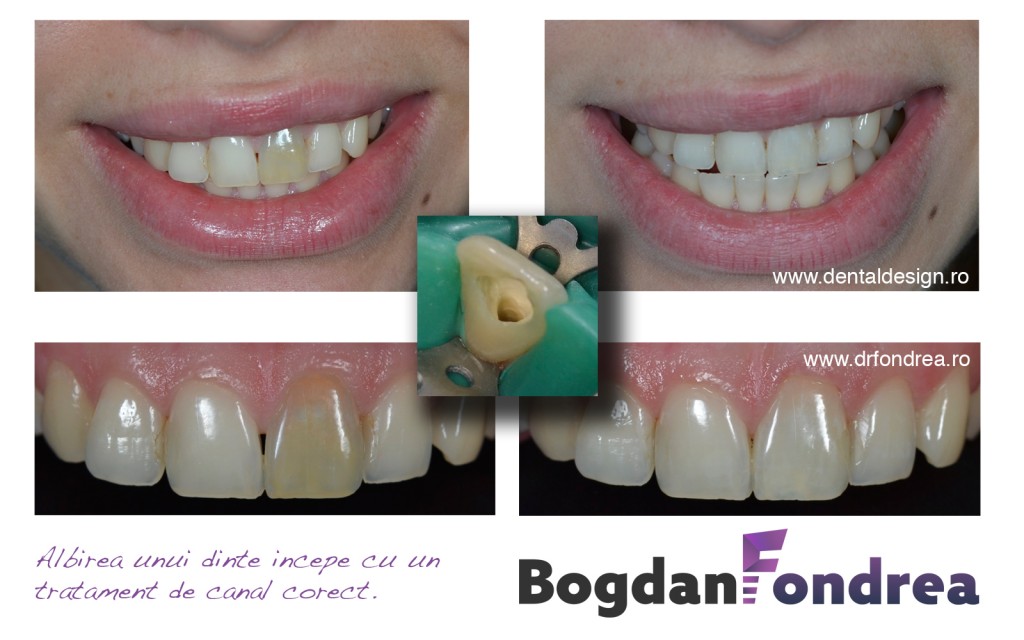Non-vital teeth with incorrect root canal treatment can, and often do, change their color as time passes. Some of them can change their color in grey, pink, brown or other shades. This is due to the deposition of degraded blood left from the incomplete pulp removal, or sometimes the root canal filling materials used as a part of the “old school”.
Regardless of the cause, the discoloration of the tooth can, and should be corrected. To begin with, we must find out the reason of this discoloration. If the root canal treatment it is not correct (read –how to see when a root canal treatment is correct), then it must be redone. In fact, this is the main reason of all discolorations, an incorrect root canal treatment, with a still infected root canal.
Bleaching a root canal or an endodontically (endo = inside, dont = tooth) treated tooth involves placement of a bleaching agent into the empty pulp chamber of the non-vital, discolored tooth. Today the most common and safest internal bleaching agent used for this technique is sodium perborate. Sodium perborate is a hydrogen peroxide releasing agent that when mixed with hydrogen peroxide, it accelerates the rate of color change. This bleaching agent can be left inside the empty pulp chamber for a few hours or days.
Non-vital tooth bleaching is performed only after a repeated and correct root canal treatment (the procedure is described here). Then, we increase the tooth strength by inserting a fiber post and the access cavity is restored with composite resin.
If the tooth presents large composite restorations, a large discoloration and a change of shape and size then it may be advisable to do a restauration with a veneer or crown, but Be careful!, only after solving the medical problems described above, not instead of these.
Non-vital tooth bleaching starts with a correct root canal treatment!
Bogdan Fondrea & Denisa Sava – www.dentaldesignclinic.co.uk





